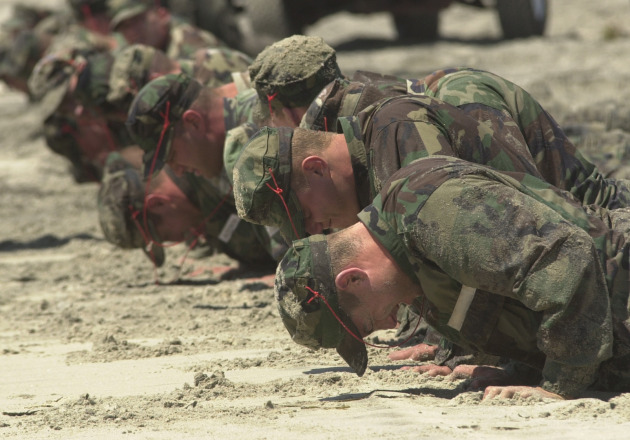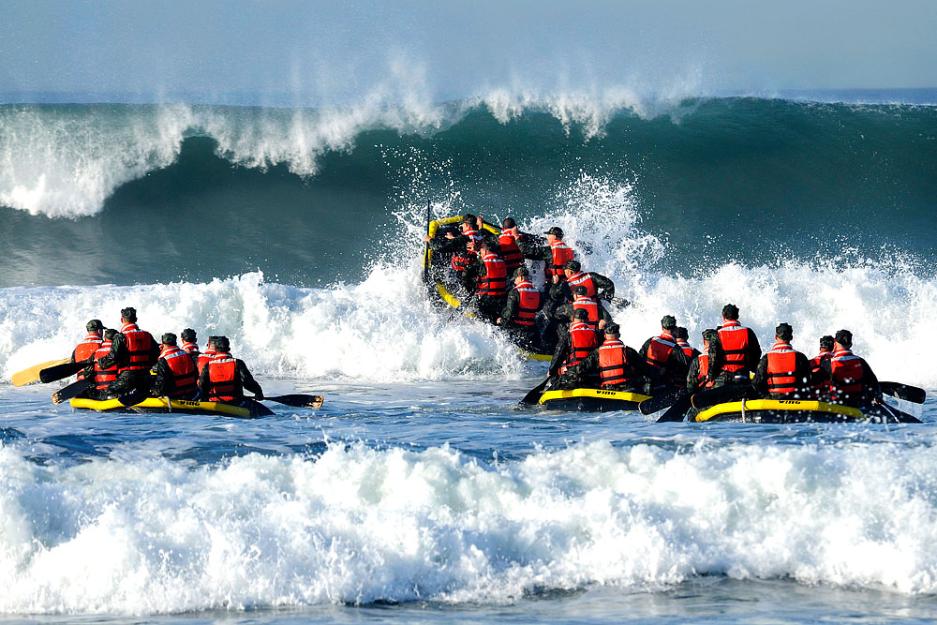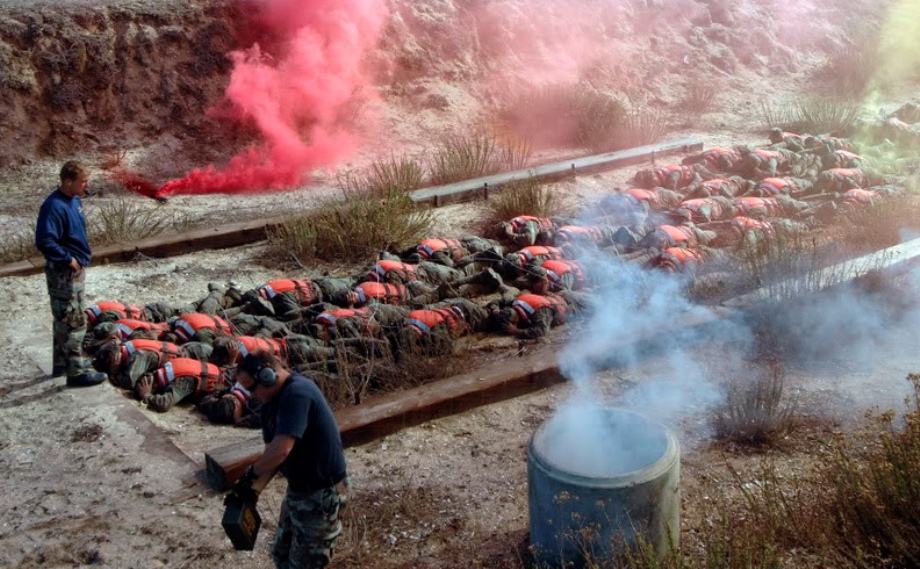First Phase, the basic conditioning phase, is seven weeks long and develops the class in physical training, water competency and mental tenacity while continuing to build teamwork. Each week, the class is expected to do more running, swimming and calisthenics than the week before, and each man’s performance is measured by a four-mile timed run, a timed obstacle course, and a two-mile timed swim. In addition to physical training, the class also learns how to conduct hydrographic survey operations.
Because of its particularly challenging requirements, many candidates begin questioning their decision to come to BUD/S during First Phase, with a significant number deciding to Drop on Request (DOR). Currently as of 2014 BUD/S attrition rate of first phase is close to 50%, class size ranging from 150 – 175. Come Hell Week breakout the class size is down to 75 or less. 20% on average complete First Phase.
Historically, candidates who have composite PST scores below 800 are three times more likely to succeed than the average student. Most importantly, candidates who have made a full commitment to their goal of becoming a SEAL and those who decide ahead of time that quitting is not an option, regardless of how challenging the training becomes, dramatically increase their chances.
The fourth week of training is known as Hell Week. In this grueling five-and-a-half day stretch, each candidate sleeps only about four total hours but runs more than 200 miles and does physical training for more than 20 hours per day. Successful completion of Hell Week truly defines those candidates who have the commitment and dedication required of a SEAL. Hell Week is the ultimate test of a man’s will and the class’s teamwork.




